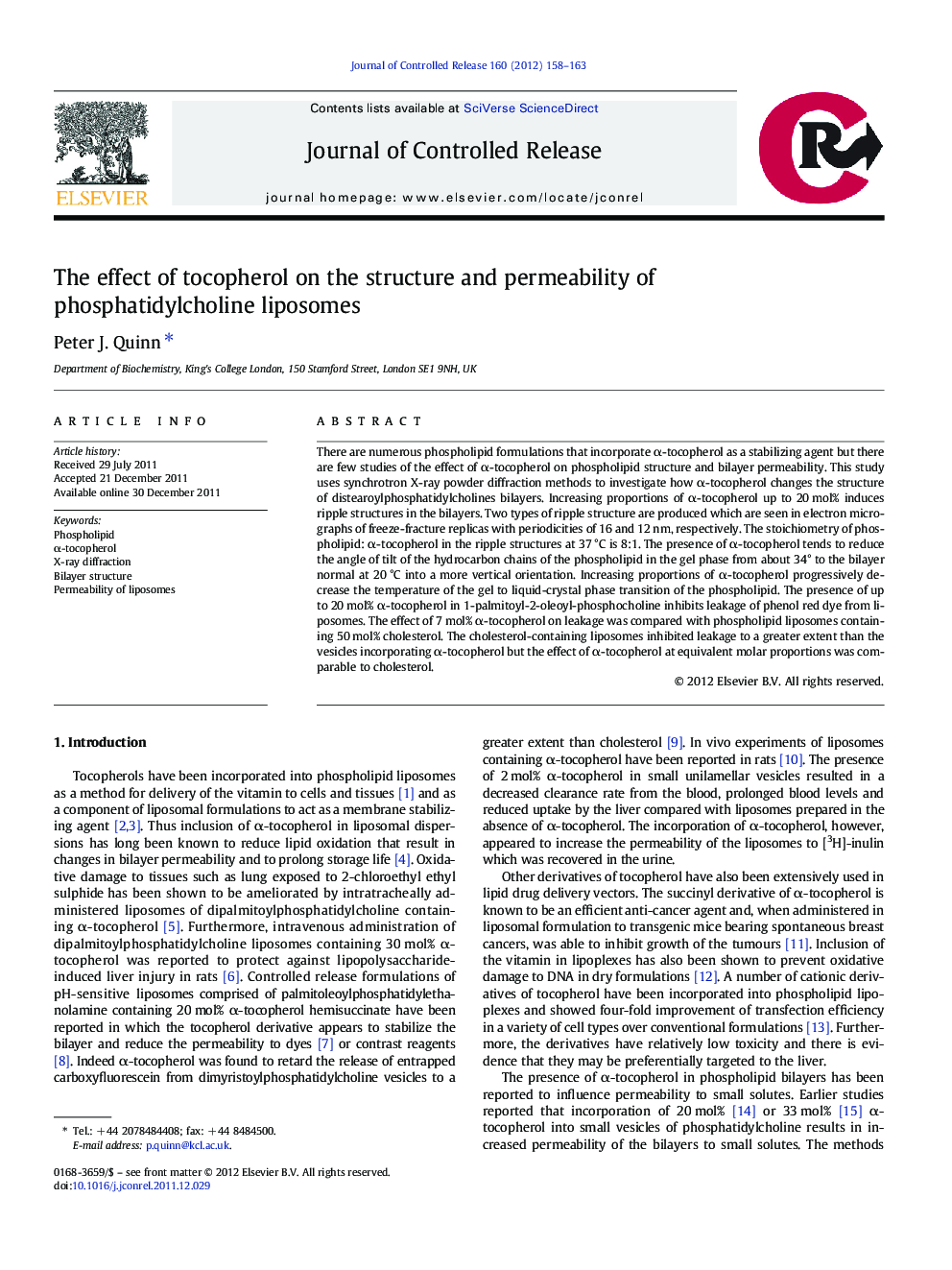| Article ID | Journal | Published Year | Pages | File Type |
|---|---|---|---|---|
| 1424610 | Journal of Controlled Release | 2012 | 6 Pages |
There are numerous phospholipid formulations that incorporate α-tocopherol as a stabilizing agent but there are few studies of the effect of α-tocopherol on phospholipid structure and bilayer permeability. This study uses synchrotron X-ray powder diffraction methods to investigate how α-tocopherol changes the structure of distearoylphosphatidylcholines bilayers. Increasing proportions of α-tocopherol up to 20 mol% induces ripple structures in the bilayers. Two types of ripple structure are produced which are seen in electron micrographs of freeze-fracture replicas with periodicities of 16 and 12 nm, respectively. The stoichiometry of phospholipid: α-tocopherol in the ripple structures at 37 °C is 8:1. The presence of α-tocopherol tends to reduce the angle of tilt of the hydrocarbon chains of the phospholipid in the gel phase from about 34° to the bilayer normal at 20 °C into a more vertical orientation. Increasing proportions of α-tocopherol progressively decrease the temperature of the gel to liquid-crystal phase transition of the phospholipid. The presence of up to 20 mol% α-tocopherol in 1-palmitoyl-2-oleoyl-phosphocholine inhibits leakage of phenol red dye from liposomes. The effect of 7 mol% α-tocopherol on leakage was compared with phospholipid liposomes containing 50 mol% cholesterol. The cholesterol-containing liposomes inhibited leakage to a greater extent than the vesicles incorporating α-tocopherol but the effect of α-tocopherol at equivalent molar proportions was comparable to cholesterol.
Graphical abstractTocopherol is a common constituent of phospholipid drug delivery formulations as a bilayer stabilizing agent. It was found to induce characteristic ripple structures in dispersions of phospholipid and inhibit leakage from liposomes.Figure optionsDownload full-size imageDownload high-quality image (374 K)Download as PowerPoint slide
